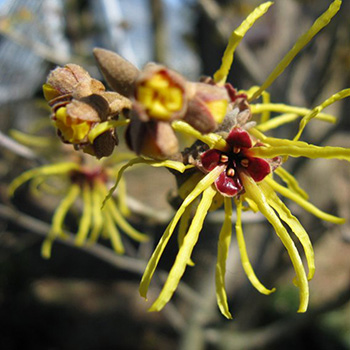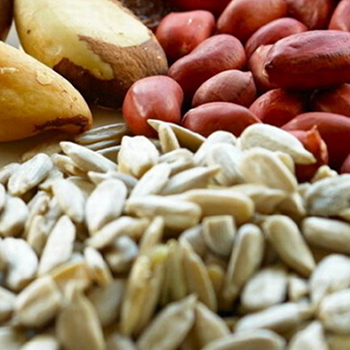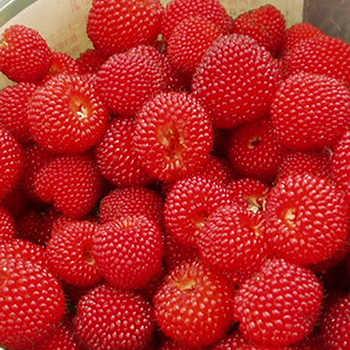目前購物車內沒有商品
Molecular Formula: C30H48O3
Molecular Weight: 456.71
CAS Number: 508-02-1
MDL number: MFCD00064914
Common Name: Oleanol Caryophyllin
Herb Source: Olea europaea L.
Parts Used: Fresh root and rhizome
oleanolic acid Solubility |
Insoluble in water,Sol in ether,acetone,chloroform and ethanol
(Science: chemical)
3 beta-hydroxyolean-12-en-28-oic acid. Occurs in leaves of olea europaea, viscum album l., and other higher plants. It is also the aglycone component of many saponins.
Chemical name:
Olean-12-en-28-oic acid, 3-hydroxy-, (3beta)-

Results and Discussion
In the present paper we describe the synthesis of seven new indole-fused oleanolic acid derivatives, 3–9, for evaluation in the NRP.252 cell assay. Fused heterocyclic derivatives of steroids and alkaloids are well documented, and biologically active indole-fused examples are of particular interest. Furthermore, several indole-fused steroids have been synthesized for electron-transfer studies.In contrast, only one research group has described the synthesis of indole-fused triterpenoids. Interestingly, a number of indole-fused diterpenes, such as the penitrems, are Penicillium fungal metabolites.Our syntheses of the target compounds 3–9 (Figure 1) are based on the Fischer indole synthesis,and are depicted in Schemes 1–4.

Figure 1.
As we have previously described,sequential diazomethane treatment and Jones oxidation of oleanolic acid (1) furnished keto ester 10 in 94% yield (Scheme 1). Fischer indolization of 10 with phenylhydrazine in acetic acid gave the known fused indole ester 11 in 90% yield. Cleavage of this hindered methyl ester with lithium iodide in DMF afforded 3 in 54% yield. The corresponding C-3 ketone obtained from 1 also underwent Fischer indolization to give 3 in 61% yield, but a persistent yellow contaminant could not be removed from 3by either crystallization or silica gel chromatography.
Scheme 1.
Due to the susceptibility of the indole ring in 3 to side reactions, particularly oxidation, modifications to the C-ring were performed prior to indolization. Thus, as shown in Scheme 2, and as we have previously described, the synthesis of 3,12-diketone 12 was accomplished via an acid mediated epoxide rearrangement that occurred upon treatment of 10 with m-CPBA. Fischer indolization of 12 (74%) followed by ester cleavage (59%) gave the desired fused indole 4. The highly hindered C-12 ketone in 12 remains unaffected under these Fischer indole reaction conditions.Likewise, as we have reported, allylic oxidation of 10 gave the known C-12,13 enone 13 (45% yield), which, upon Fischer indolization (79% yield) and ester cleavage (55% yield), afforded fused indole 5.
Scheme 2.
The indole ring substituted analogs 6–9 were synthesized by employing the appropriate substituted phenylhydrazine in the Fischer indolization (Scheme 3). Thus, treatment of 10with 2-chlorophenylhydrazine gave indole 14 that could be converted to indole 6 by ester cleavage. This indolization reaction was accompanied by 31% of uncyclized hydrazone. A sequence starting with 3-fluorophenylhydrazine yielded a mixture of indoles 15 and 16, which were separated by sequential column and preparative silica gel chromatography in a 2:1 ratio, respectively. Cleavage of the methyl esters afforded 7 and 8.
Scheme 3.
Finally, the 5-methoxyindole derivative 9 was synthesized directly from 3-keto acid 17 by Fischer indolization in 62% yield. The known keto acid 17 was prepared from oleanolic acid (1) by Jones oxidation (95% yield) as previously described. Interestingly, the corresponding methyl ester analog that was prepared by indolization of 10 decomposed under the lithium iodide ester cleavage conditions.

Scheme 4.
Unfortunately, attempts to effect indolization of C-12 ring C ketone derivatives were unsuccessful, presumably due to the hindered nature of this position. For example, we could not prepare the phenylhydrazone of ketones 18 and 19, or effect indolization of ketones 19 and 20 with 2-iodoaniline using the palladium-annulation method of Chen et al.39

Oleanolic acid (1), indoles 3-9, and 10, 12, and 13 were screened in vitro for their ability to inhibit proliferation of premalignant, non-tumorigenic prostate cells. Of the compounds prepared in the present study, only 4 and 5 showed some activity (IC50 <5 M). All of the others were essentially inactive in this assay (>5 M). For comparison, TGF-β has IC50 = 0.000014 M. Therefore, in view of the disappointing activity in this assay of this series of fused-indole oleananes, we are not currently pursuing the study of additional examples of indole-fused triterpenoids.
Chemical & Physical parameter
--------------------------------------------
Item Standard
Assay(HPLC), % ≥98.0
Mesh analysis Pass 80Mesh
Loss on drying, % ≤3.0
Residue on ignition, % ≤0.1
Chloride, % ≤0.1
Oleanolic acid (OA) and ursolic acid (UA) are isomers; they have the same chemical formula. These two pentacyclic triterpenes are of interest to scientists because of their numerous biological activities. OA can lower blood sugar, a property attributed to cornus, which is listed among the Chinese herbs used for treating diabetes. UA and OA have liver-protecting and anti-inflammatory effects. Oleanolic acid inhibited the growth of two species of oral bacteria: Streptococcus mutans, which causes cavities, and Porphyromonas gingivalis, which causes periodontal disease.
Oleanolic acid belongs to triterpene acids that has been shown to protect against a number of hepatotoxicants, and is used in China to treat hepatitis. Oleanolic acid has many functions, but mainly known as remarkable antitumor activity. Owing to its effects, it is widely used in pharmaceutical and cosmetic industry in curing skin cancer, etc.
Flavored product additive and method for using same:
Abstract:
One or more compounds selected from among oleanolic acid, ursolic acid, and polygodial added to a flavored product to reduce an aftertaste in the product and enhance its sweetness. This flavored product additive is added to diet beverages and flavored products at an amount effective to reduce the aftertaste of the artificial sweetener and improve the sweet flavor.This amount is from 0.1 ppm to 1000 ppm with respect to the artificial sweetener. The present invention also includes a diet drink which contains polygodial, oleanolic acid, or ursolic acid at 0.001 ppb to 10 ppm with respect to the artificial sweetener, for improving or reducing an aftertaste from the artificial sweetener and also to improve the sweetness of the flavor.
Briefly stated, one or more compounds selected from among oleanolic acid, ursolic acid, and polygodial, added to a beverage containing an artificial sweetener, reduces an aftertaste in the beverage and improves its sweetness. This flavored product additive is added to flavored products at an amount effective to improve sweetness of the flavored product. This amount is from 0.1 ppm to 1000 ppm with respect to the artificial sweetener. The flavored product additive is also added to flavored products at an amount effective to reduce the metallic aftertaste of artificial sweeteners. This amount is from 0.1 ppm to 1000 ppm with respect to the artificial sweetener. The present invention also includes a diet drink which contains polygodial, oleanolic acid, or ursolic acid at 0.001 ppb to 10 ppm with respect to the diet drink for improving the sweetness of the drink and reducing an aftertaste from an artificial sweetener.
For the method of adding the compounds of the present invention to an artificial sweetener, oleanolic acid, ursolic acid, and polygodial may be added as a purified product, as a crude extract from plants which contain these, or as a mixture of the two. The extracted oil of these plants can be diluted in a constant volume of an organic solvent which is approved for use in food products, such as ethanol or the like. Alternatively, the extract or purified additive may be made into a Captex.TM. suspension and added to the sweetener. The amount required to improve the aftertaste and sweetness of the artificial sweetener depends on the type and amount of sweetener. Generally, this amount is between about 0.1 ppm and about 1000 ppm with respect to the artificial sweetener. A preferred amount is between about 0.5 ppm and about 500 ppm, and a more preferred amount is between about 1 ppm and about 200 ppm. The components of the present invention, oleanolic acid, ursolic acid, and polygodial, can be added to the flavored products such as food, beverages, toothpaste, or the like at the final stages of preparation.
Experiment 1
Oleanolic acid (from Aldrich Chemical Co.) was dissolved in ethanol to its approximate saturation point. Samples of a commercially available carbonated diet beverage (diet beverage 1) containing 0, 1.0, 2.5, and 5.0 ppm added oleanolic acid were prepared. Diet beverage 1 contained aspartame as an artificial sweetener. Nine panel members assessed the sweetness of the samples. 1.0 ppm of the additive was selected for further characterization, because all the panelists responded favorably to this concentration, and six members chose it as the best concentration.
Experiment 2
Oleanolic acid (from Aldrich Chemical Co.),and ursolic acid (from Aldrich Chemical Co.) were dissolved in small volumes of ethanol. Crude polygodial, prepared as described above, was dissolved in Captex.TM.. Test samples were prepared by adding each to diet beverage 1 to a final concentration of 1.0 ppm. The test samples prepared as above were compared to diet beverage 1 containing no additives by a panel members of eight members. The results are shown in Table.
TABLE 1
______________________________________
Reduction
Additive Sweetness
in Aftertaste
Comments
______________________________________
No additive
.+-. .+-. --
Oleanolic acid
.+-. + --
Ursolic acid
+ +++ Change in feeling in the
mouth
Polygodial
.+-. ++ Greatest removal of metallic
taste
______________________________________
Experiment 3
Oleanolic acid (from Aldrich Chemical Co.) and ursolic acid (from Aldrich Chemical Co.) were dissolved in small volumes of ethanol. Crude polygodial, prepared as described above, was dissolved in Captex.TM.. Test samples were prepared containing the test compounds at concentrations of 0.1 ppb and 1.0 ppb in a second commercially available carbonated diet beverage (diet beverage 2. The diet beverage contained Aspartame and Acesulfame K as the sweeteners. The test samples were compared to diet beverage 2 with no additives. The results are shown in Table 2.
TABLE 1
______________________________________
Reduction
Additive Sweetness
in Aftertaste
Comments
______________________________________
No additive
.+-. .+-. --
Oleanolic acid
.+-. + --
Ursolic acid
+ +++ Change in feeling in the
mouth
Polygodial
.+-. ++ Greatest removal of metallic
taste
______________________________________
As indicated in Table 2, all of the panelists judged that, compared with the control, adding the above substances made the aftertaste of diet beverage 2 more palatable, in all cases.



